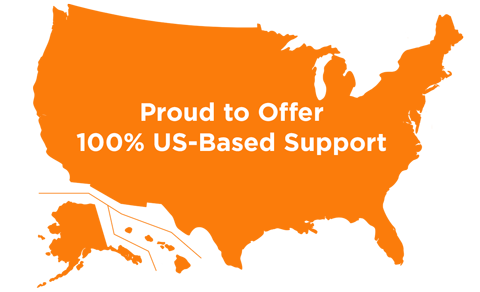How Content Intelligence Supports Your Company’s Digital Transformation
Digital transformation. It’s a phrase that seems to be tossed around more and more these days; however, despite its burgeoning popularity, it’s somewhat of a misnomer when examined through a critical lens. In today’s unpredictable business climate, companies don’t just need to transform, they need to evolve in order to adapt and thrive. The digital transformation sweeping the globe isn’t a passing trend, it’s the next major challenge in the survival of the fittest — and, as it turns out, the key to staying viable may be content intelligence.
What Is Digital Transformation?
Business leaders that are determined to keep up have a lot to consider as they seek solutions to assist them with their digital transformation. According to Salesforce, these technologies can be utilized to modify or replace existing “business processes, culture, and customer experiences to meet changing business and market requirements.”
In other words, every company’s digital transformation is unique to its own existing processes and structure. Business leaders can spend a lot of time digging through niche technologies designed for their vertical, but this isn’t always the best method. Niche solutions typically require multiple vendors and haphazard integrations. Starting with a robust, formalized solution can help streamline integration and minimize the learning curve of adapting to digital processes. So, where do you start? First, you’ll have to answer this question:
What is the one thing every business has in common?
Content. Documents. Information. It’s the fuel that keeps a business operational, which is why business leaders exploring options for their own digital transformation should seek a flexible solution that allows them to handle their content more intelligently. With content intelligence, businesses can adopt a solution that can be fitted to every department across their organization, making it the perfect technology to kick off your digital transformation.
Content Intelligence Tools Simplify Unstructured Data Management
Content intelligence encompasses a range of technologies designed to digitize business-critical information so it can be routed throughout an organization as efficiently as possible. Content intelligence allows a business to reduce processing times, increase fulfillment speed, and mitigate human error. Businesses benefit because their employees have far fewer manual tasks, significantly reducing the chance of missing or erroneous content.
Leading content intelligence platforms utilize artificial intelligence and machine learning to read documents, capture and index information, rout it approved users, validate data across multiple related documents, and a number of other functions that help your organization manage unstructured data. The technologies that make up content intelligence tools include:
- Optical Character Recognition (OCR)
- Machine Learning
- Content Analytics
- Unit of Measure Normalization
- Universal Cross-Reference Tables
- Mobile Capture
- And More
Leveraging Content Intelligence for Your ERP System
Major Enterprise Resource Planning (ERP) providers, such as Oracle, SAP, and Infor, have grown rapidly over the last decade, culminating in Koch’s $13 billion acquisition of Infor in April 2020. A company’s ERP system plays an integral role in its day-to-day operations. Unfortunately, widespread adoption and a race to acquire third-party solutions that bridge the gap in these ERP systems’ shortcomings have made it integral for companies to seek partnerships that help them get the most out of their ERP system, such as business process automation for Accounts Payable or remote GL coding for invoices.
Regardless of which ERP system or line of business application a company relies on, a leading content intelligence solution will capture the important information from any incoming document and rout it a relevant user or into an automated workflow, depending on the software stack being utilized by the business. Any employee within the organization who has the proper permissions can then view, edit, and manage the document without leaving their desk. Companies that embrace business process automation can even eliminate approvals altogether if the matching process passes a certain confidence threshold — typically around 90 percent.
Content intelligence tools make quick work of duplicate invoices, mismatches, and other exceptions that fail to pass through your ERP system. Machine learning capabilities mean visually unique invoices, such as those sent from new customers, are quickly read, interpreted, and applied to any future invoices from the same source. In a perfect system, document routing can be automated for as many as 70 to 90 percent of documents, allowing companies to cut costs, consolidate resources, and eliminate “busy work.”
Make Informed Decisions and Gain Superior Visibility With Content Intelligence
Another benefit of content intelligence is the ability for business leaders to clearly visualize the inner workings of their business with analytics. How many invoices does your company process a month? Which employees are processing the most documents? How many documents are being held up for exception handling? How long does your process take from start to finish on average?
Businesses that can answer these questions have all the information they need to make informed decisions that protect themselves from the unexpected. Some content intelligence tools, such as IntelliChief, even provide ROI analytics to prove that they are making businesses less resource hungry and more efficient. Businesses can literally monitor ROI in real-time — a testament to the efficacy of content intelligence.
Managing Risk During Digital Transformation
Companies undergoing digital transformation are oftentimes riddled with anxiety as they modify business processes to fit the “future mold.” They conjure images of lost documents, organizational freezes, and unforeseen legal issues. Rest assured, these fears will soon be put to rest once their digital transformation is complete.
Content intelligence can bolster an existing risk management strategy by eliminating lost documents and generating a digital paper trail of all enterprise content. Plus, the superior visibility mentioned earlier means every aspect of your process is accounted for. Additionally, when the time comes to audit, having all of your documents and content available in a digital repository means your information is ready for review at all times.
The Content Intelligence Checklist
Are you ready to explore your options? There are several content intelligence platforms available on the market, but not every solution will be right for your business. Some providers are only interested in solving a single problem for an organization. Others, generally Enterprise Content Management (ECM) providers, are geared towards larger businesses that want a scalable solution for maximum ROI. Business leaders should keep this checklist on hand when researching solutions to ensure that they end up with the right content intelligence tools for their needs:
- Does my business process a large volume of paper, documents, or content?
- Are misfiled, missing, or lost documents hindering my processing speed?
- Does the solution I am researching integrate with my existing ERP system(s) or line of business application(s)?
- Does the solution support an array of different use cases?
- Does the solution support interdepartmental connectivity?
- Is the solution scalable?
- Does the solution offer named licenses or concurrent licenses?
- Does my current ERP provider recognize this solution (i.e., Oracle Gold Partner, Infor Solutions Partner, etc.)
Naturally, business leaders will be confronted with their own questions while perusing all the options available on the market — and rightfully so. Thoroughness is essential when selecting a content intelligence solution as it will serve a business for years to come, so we encourage you to take your time when performing your due diligence. If you find yourself at a crossroads, or simply want to talk to an expert about whether content intelligence is right for your business, we encourage you to contact us today.







